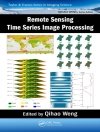Natural and anthropogenic disasters have caused a large number of victims and significant social and economic losses in the last few years. There is no doubt that the risk prevention and disaster management sector needs drastic measures and improvements in order to decrease damage and save lives of inhabitants. Effective utilization of satellite positioning, remote sensing, and GIS in disaster monitoring and management requires research and development in numerous areas: data collection, access and delivery, information extraction and analysis, management and their integration with other data sources (airborne and terrestrial imagery, GIS data, etc.), data standardization, organizational and legal aspects of sharing of remote sensing information. This book provides researchers and practitioners with a good overview of what is being developed in this topical area.
विषयसूची
An Online Colour 2D and 3D Image System for Disaster Management.- On the Application of Nighttime Sensors for Rapid Detection of Areas Impacted by Disasters.- A Fuzzy Relational Method For Image-Based Road Extraction For Traffic Emergency Services.- Development Of Processing Chains For Rapid Mapping With Satellite Data.- Automatic Generation of Remote Sensing Image Mosaics for Mapping Large Natural Hazards Areas.- Mapping Hazardous Slope Processes Using Digital Data.- Monitoring Xi’an Land Subsidence Evolution by Differential SAR Interferometry.- Evaluation of NARAD Precipitation Data for Rainfall Monitoring in Eastern Ontario, Canada.- Evaluating the Use of a Low-Cost Unmanned Aerial Vehicle Platform in Acquiring Digital Imagery for Emergency Response.- Automatic Classification of Collapsed Buildings Using Object and Image Space Features.- Rapidly Realizing 3D Visualisation for Urban Street Based on Multi-Source Data Integration.- 3D Dynamic Simulation within GIS in Support of Disaster Management.- Ontologies for Disaster Management Response.- Mapping between dynamic ontologies in support of geospatial data integration for disaster management.- An Open Geo Spatial Standards-Enabled Google Earth Application to Support Crisis Management.- Web Service Orchestration of OGC Web Services for Disaster Management.- Agent-Based Simulation of Spatial Cognition and Wayfinding in Building Fire Emergency Evacuation.- Exploratory Spatial Data Analysis to Support Maritime Search and Rescue Planning.- A Model of Spatial Data Integration Interoperability on Oracle Spatial.- Collaboration enabled GIS Tools for Emergency Operation Centre.- Comparison of Simplifying Line Algorithms for Recreational Boating Trajectory Dedensification.- Hierarchical Risk- Based Spatial Analysis of Maritime Fishing Traffic and Incidents in Canadian Atlantic Waters.- A Fuzzy Relation Analysis Method Implemented in GIS for Modeling Infrastructure Interdependency.- Modeling of Flood-Related Interdependencies among Critical Infrastructures.- Challenges for the Application of GIS Interoperability in Emergency Management.- Increasing public and environmental safety through integrated monitoring and analysis of structural and ground deformations.- Using GPS for Monitoring Landslides in Kala Reservoir of the Yalong River Area.












